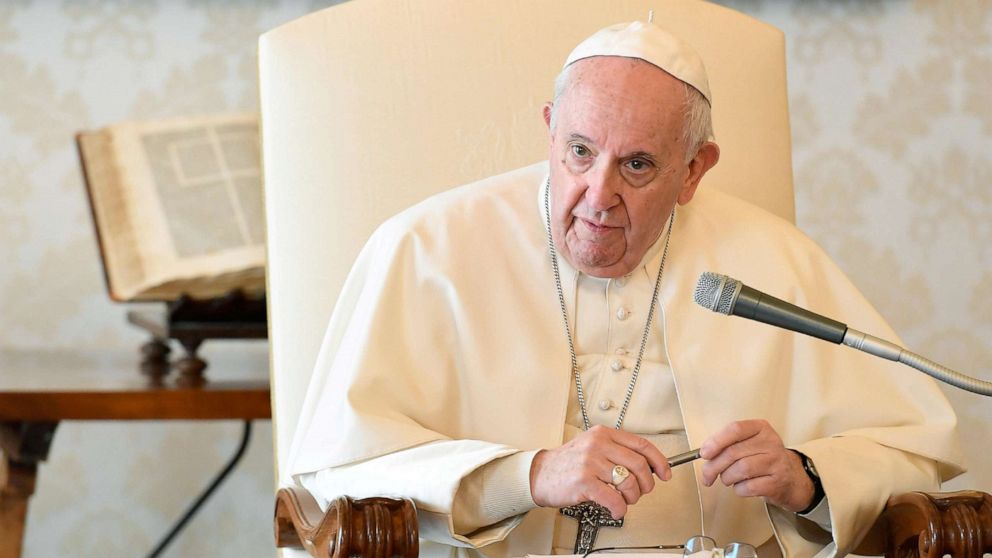Pope Francis once again confronts the specter of COVID-19 during Holy Week and Easter
Rome -- This year, Pope Francis will again celebrate Holy Week under COVID-19 restrictions -- without the crowds of faithful who have normally been a part of papal ceremonies at the Vatican for centuries.
The pope, who has been stymied from travel due to COVID restrictions, will celebrate all but one Holy Week ceremony inside St. Peter’s Basilica with only a number of cardinals, Vatican officials and a "limited" number of congregants present.
The Stations of the Cross on Good Friday will be the only ceremony to take place outside -- in St. Peter’s Square -- but not at the Colosseum in Rome as is traditionally done.
Since his election and before the COVID-19 pandemic, Pope Francis has commemorated the Last Supper and foot-washing ceremony on Holy Thursday at a prison, detention or refugee center in Rome. This will be the first year the pope did not celebrate this ceremony; the dean of the College of Cardinals, Giovanni Battista Re, will perform the ritual instead. The Vatican did not explain the change.
In addition, the Easter vigil mass in Rome has been moved up to 7:30 p.m. to allow all to get home before curfew three hours later. The Pope will recite the "Urbi et Orbi’ (the city and the world) blessing after the Easter morning mass.
Italy, which went into national lockdown last spring and was decimated by the virus, is slated to go into the highest level of COVID-19 restrictions nationwide for Easter weekend, from April 3-5. The country is continuing to battle a third wave of the virus due to new variants and the country’s vaccination program lagging, partly due to lack of doses.
However, unlike last year, churches in Italy will be allowed to be open during Easter and masses can be celebrated. Churchgoers have been asked to go to the church nearest their house, to follow strict anti-COVID rules and for all ceremonies to end in time for people to get home before the national curfew.
The pope has had his movements hampered due to COVID restrictions and has not been able to meet the flocks of pilgrims, who traditionally come to the Vatican to see him. In the meantime, though, he has insisted on keeping many of his appointments and meetings– most televised to reach millions of viewers around the world.
Since the pandemic flared across the globe, the pope has insisted that everyone should receive the COVID-19 vaccine without exception, especially the most fragile and vulnerable in the poorer regions of the world. He has also repeatedly encouraged people to be vaccinated as a way of exercising responsibility to one’s neighbor and the collective well-being.
The Vatican started its own vaccination program in January and 50 needy, mostly homeless people living around St. Peter’s were vaccinated at the request of the pope. On March 26, the Vatican announced that it would vaccinate 1,200 "of the poorest and most marginalized people" during Holy Week.
The pandemic has weighed on the pope. Speaking to journalists on his return flight from his 4-day visit to Iraq earlier this month -- his first foreign travel since the pandemic broke -- he said he had felt "imprisoned" in the Vatican during the last year.
And the pandemic is causing other concerns in the Vatican -- the lack of pilgrims and tourists is impacting its finances, which may force it to use 40 million euros in reserves for a second consecutive year. The Vatican museums, an important source of revenue with its 6 million tickets sold in 2019, were open only for a short time in 2020 and remain closed due to Rome’s lockdown.
Furthermore, due to the financial crunch and in the hope of saving jobs in the Vatican, Pope Francis issued a decree on March 24 ordering cardinals in the Roman Curia to take a 10% pay cut and reducing the salaries of most other clerics working in the Vatican. The pay cuts, believed to be the first time a pope has made such a decision in living memory, go into effect April 1.




